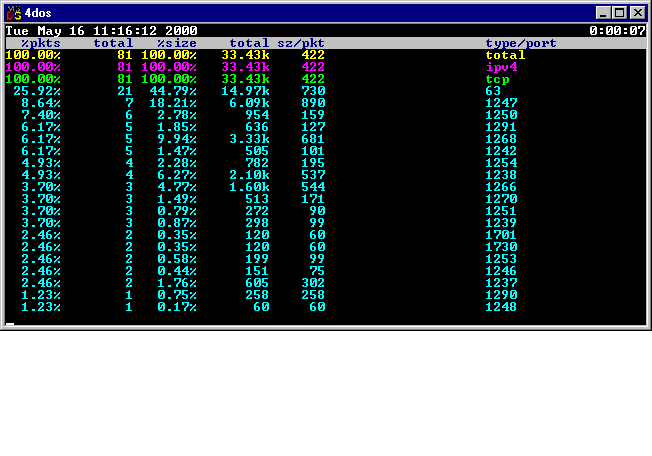

- #Install tcpdump and tcptrace how to
- #Install tcpdump and tcptrace update
- #Install tcpdump and tcptrace full
- #Install tcpdump and tcptrace mac
You can choose the level of detail you want captured, from just the minimal packet headers (showing source and destination hosts and ports) up to a full hex and ASCII dump of the packet contents. MacSniffer includes a filter editing interface and a filter library to easily construct and reuse packet filters to view a subset of all the traffic on the connection, such as just that destined for a specific host or port. MacSniffer allows you to view all of the traffic on a network connection, such as ethernet.
#Install tcpdump and tcptrace mac
Your Mac can't use the Wi-Fi interface for normal network traffic while tracing.After running the application, you can access the packet trace feature by choosing Utilities from the Window menu and then selecting the Frame Capture tab.When using this tool, keep in mind the following:
#Install tcpdump and tcptrace how to
Next time I’ll show you how to make a dashboard that you can share with other splunk users in your organization.This shows all traffic visible to your Mac, including low-level Wi-Fi traffic that's not visible with other tools. Once you’re in the report builder for Chart Type select area and click Apply:
#Install tcpdump and tcptrace update
To get a useful graph out of splunk update your search string to read: sourcetype="tcptrace" | search host1_rexmt_data_pkts>0 OR host2_rexmt_data_pkts>0 | timechart max(host1_rexmt_data_pkts),max(host2_rexmt_data_pkts) | fillnull value=0 | rename max(host1_rexmt_data_pkts) as "Packet Retransmits from me",max(host2_rexmt_data_pkts) as "Packet Retransmits to me" Step 4: Use splunk to graph data from tcptrace Want to see something cooler? Try selecting the Heat Map Overlay: Sourcetype="tcptrace" | search host1_rexmt_data_pkts>0 OR host2_rexmt_data_pkts>0 | fields host1,host2,host1_rexmt_data_pkts,host2_remxt_data_pktsĮxecute your search, but this time click the Events Table button. Perhaps you’d like to know which connections are retransmitting packets? Add the following modifier to your search string | fields host1,host2,host1_rexmt_data_pkts,host2_remxt_data_pkts so that it reads: Sourcetype="tcptrace" | search host1_rexmt_data_pkts>0 OR host2_rexmt_data_pkts>0 Log into your splunk instance and execute this search to see a timeline of most frequent packet retransmissions: Once you’ve updated your splunk system configs restart Splunk: $SPLUNK_HOME/bin/splunk restart Step 3: Use splunk to extract useful data from tcptrace REGEX = \s+rexmt data pkts:\s+(?\d+)\s+rexmt data pkts:\s+(?\d+)įORMAT = host1_rexmt_data_pkts::"$1" host2_rexmt_data_pkts::"$2"Īdd these lines to your $SPLUNK_HOME/etc/system/local/nf Parse the data with tcptrace: $ tcptrace -l tcp.dump > /tmp/tcptrace.log Step 2: Configure splunk to read parsed data from tcptraceĪdd these lines to your $SPLUNK_HOME/etc/system/local/nfĪdd these lines to your $SPLUNK_HOME/etc/system/local/nfīREAK_ONLY_BEFORE = TCP\ connection\ \d+:Īdd these lines to your $SPLUNK_HOME/etc/system/local/nf Step 1: Capture some data with tcpdump and parse the data with tcptraceĬapture data with tcpdump: $ sudo tcpdump -nevvs 1520 -C 10 -w /tmp/tcp.dump



 0 kommentar(er)
0 kommentar(er)
